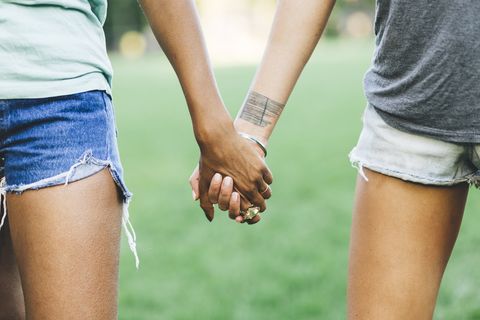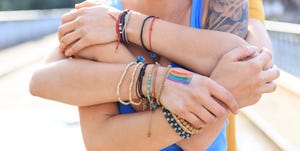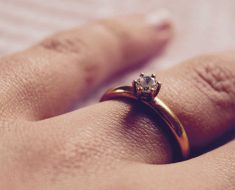
Okay, so Drew Barrymore says she’s bisexual—but what does that really mean? Even if you think you know, trust me, it’s more complicated than you probably realize.
Around 13 percent of people identify as bisexual, according to GLAAD. But what it means to be bisexual isn’t always easy to define, even for the experts.
The short version, as defined by GLAAD, is “experiencing attraction to more than one gender.”
But others look at it a little more broadly: “I’d define it as a sexual attraction, consummated or not, to individuals of both sexes and/or to individuals who define their sexuality in a non-sexed or gender fluid way,” says Matt Lundquist, a licensed clinical social worker and therapist in New York.
What bisexuality looks like in practice is often super-nuanced, according to Joe Kort, Ph.D., a therapist specializing in sexual identity. “It’s really up to the individual—you have to ask, ‘what does it mean to you?’” he explains.
How is it different from pansexuality or fluid sexuality?
A woman who dates both men and women could potentially identify as bisexual, pansexual, or queer—there’s no way to know unless she tells you. Let’s break it down.
Bisexuality vs. Pansexuality
While bisexuality is defined as an attraction to more than one gender, pansexuality ditches the idea of gender entirely. “Someone who identifies as pansexual is asserting that they are disinterested in gender when it comes to sexual attraction,” Lundquist explains.
People who identify as pansexuals might be attracted to any combination of men, women, people who identify as non-binary, straight, gay and trans. In other words, labels surrounding gender and orientation aren’t really relevant when it comes to pansexuality, which is why you’ll often hear pansexuals say they’re attracted to “people.”
Bisexuality vs. Fluid Sexuality
Fluid sexuality is its own thing too. Here’s the main difference: People who are sexually fluid may define their sexuality differently over time, and depending on the situation (or person) at hand.
Kort uses the example of someone who usually identifies as monosexual who suddenly finds themselves into someone of their non-preferred gender. “The key is that attraction doesn’t necessarily generalize to other people of that gender,” he says, it’s just this particular crush.
Bisexuality vs. Queer Sexuality
Queer is something of a catch-all term. “It encompasses a broad spectrum of non-traditional, non-straight sexual orientations as well as a broad spectrum of non-binary, non-traditional expressions of gender,” Lundquist says.

Basically, it’s a label for people who want to ditch labels. “Queer can mean someone who is straight but doesn’t want to be labeled by these binary restrictive labels,” Kort explains. “The definition of queer is like a thumbprint,” he adds. “It can be different for every individual.”
Here’s some more terms that may be helpful to know:
So…how do you know if you’re bisexual?
Ultimately sexuality is a spectrum—it’s not about fitting perfectly into one label. And that means there’s no one way to know if you’re bisexual.

Here’s a helpful way to think about it, though: “A person can know they’re bisexual if they have an enduring longtime attraction to multiple genders,” Kort explains. The key is that it’s a generalized attraction to an entire group—in other words, if you mostly like men but have a raging girl crush on Ruby Rose, that doesn’t necessarily mean you’re bi.
It’s not a perfect science, but Lundquist recommends being okay with the messiness. “Letting these feelings exist, not shoving them aside, and being okay with the complexity of sexuality,” he says, “can help you figure out what your sexual orientation means for you.”
Source: Read Full Article





